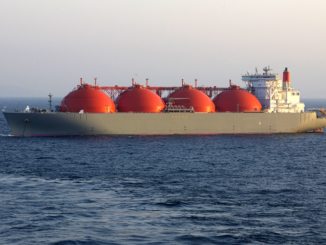
In a significant pivot for one of Europe’s renewable energy frontrunners, the Netherlands has announced plans to reduce its offshore wind capacity targets by up to 40%, scaling back from an ambitious 50 gigawatts (GW) by 2040 to a more modest 30-40 GW. This decision, outlined in a letter from Climate and Green Growth Minister Sophie Hermans to the Dutch Parliament, reflects growing challenges in the sector and raises questions about the feasibility of aggressive green energy goals.
With current offshore wind capacity standing at just over 5 GW, the revised target aims to balance ambition with realism amid economic and demand-related hurdles.
Are you from California or New York and need a tax break?
The Netherlands’ Energy Mix: A Snapshot
The Netherlands’ energy landscape remains heavily reliant on fossil fuels, though renewables are gaining ground. As of 2024, oil accounted for 41% of the total energy supply, followed closely by natural gas at 36%
Renewable energy sources made up 19.8% of gross national energy consumption in 2024, up from 17.4% in 2023, driven largely by expansions in offshore wind and biofuel usage.
In the electricity sector specifically, renewables have shown stronger progress. By 2024, half of the country’s electricity production—approximately 61 billion kWh—came from sources like solar, wind, and biomass, marking a 10% increase from the previous year.
The government has set a target of 75% renewable electricity by 2030, which aligns with broader EU goals but exceeds the global average trajectory toward 60% renewables in power generation.
Despite these advances, the overall energy mix highlights the Netherlands’ continued dependence on imported fossil fuels, making the shift to renewables critical for energy security and emissions reduction. The country aims for net-zero carbon emissions by 2050, with measures including subsidies for green technologies and infrastructure upgrades.
|
Energy Source
|
Share of Total Energy Supply (2023)
|
Share of Electricity Production (2024)
|
|---|---|---|
|
Oil
|
41%
|
N/A
|
|
Natural Gas
|
36%
|
~50% (fossil fuels combined)
|
|
Renewables
|
~18% (2023 estimate)
|
50%
|
|
Other
|
5%
|
N/A
|
Sources: IEA and CBS data.
Why the Netherlands Is Backing Off
The decision to dial back offshore wind ambitions stems from a confluence of practical and economic factors. Minister Hermans described the original 50 GW target as “not realistic,” citing an assessment of slower-than-expected electricity demand growth and waning industrial interest.
Soaring costs in the offshore wind sector—exacerbated by supply chain disruptions, inflation in raw materials, and logistical challenges—have made unsubsidized projects less viable.
A key issue is the decline in demand for long-term power purchase agreements from industrial users, who were expected to drive the sector forward. For instance, chemical giant BASF SE recently incurred a €300 million loss after relinquishing its stake in a Dutch offshore wind farm, attributing the move to lower-than-anticipated power needs.
Additionally, the high costs of producing green hydrogen—once touted as a major driver for renewable energy demand—have stifled investments, as the anticipated boom in hydrogen production has not materialized.
Broader challenges, such as grid congestion, permitting delays, and local opposition to onshore wind projects, have also contributed to the rethink.
This isn’t the first adjustment; the Netherlands previously delayed its 21 GW offshore wind target from 2031 to 2032 due to similar constraints
While offshore wind remains a cornerstone of the nation’s energy strategy, the government is now prioritizing achievable goals to avoid overcommitment and potential financial strain on taxpayers and consumers.
Is This Part of a Global Trend in Easing Off Aggressive Renewables?
The Netherlands’ rollback is emblematic of a broader, albeit uneven, trend in Europe where real-world obstacles are tempering ambitious wind, solar, and storage targets. Neighboring Germany has slashed generation capacity at new offshore wind sites by up to 50%, citing similar cost and feasibility issues.
Denmark, another wind powerhouse, received zero bids in its largest-ever offshore tender late last year, signaling investor hesitation amid rising expenses and policy uncertainties.
In the UK and elsewhere, wind sector growth has been hampered by macroeconomic pressures, supply chain bottlenecks, and domestic policy barriers, though experts suggest these challenges may be easing.
Globally, however, the picture is more optimistic, with renewables continuing to surge. Solar installations grew 35% year-on-year in 2024, wind by 5%, and energy storage by 76%, putting the world on track to add over 5,500 GW of renewable capacity by 2030—nearly tripling current levels.
In the U.S., solar and battery storage set installation records in 2024, while wind has plateaued but remains robust.
China leads with massive additions across solar, wind, and coal, emphasizing “energy addition” over strict transitions.
That said, aggressive targets for wind, solar, and storage are facing pushback in regions where intermittency, grid limitations, and economic viability pose risks. For example, studies indicate that exceeding 20% variable renewables in the energy mix can spike costs without adequate storage or backup.
Critics argue that net-zero plans may continue to scale back as political and financial realities bite, potentially shifting focus to hybrid systems including nuclear, hydro, and gas.
While global renewable markets are projected to reach $4.86 trillion by 2033, growing at 14% CAGR, Europe’s experience underscores the need for balanced, adaptable strategies to sustain momentum.






